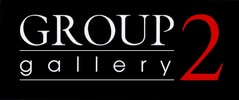|
Klik hier om te bewerken.
|
"Palissades" 1978
|
|
Klik hier om te bewerken.
|
"Palissades" 1978
|
|
8 rue Blanche, 1000 Brussels - Belgium
T. +32 (0)2 539 23 09 | group2gallerybrussels@gmail.com By appointment only Subscribe to our newsletter
|
